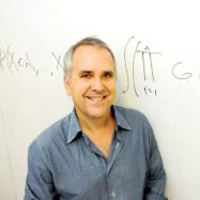NSF Science Nation Highlights CCC Council Member Shwetak Patel’s Ubicomp Lab

Would you like to know how much energy your living room TV is using when it is running? What about when how much it uses while still plugged in and turned “off”? How about checking to see if your newborn baby has jaundice using your smartphone? Would that be helpful? All these practical applications are now possible using a smart sensor in the home and on your phone.
The National Science Foundation Science Nation recently went to the Computing Community Consortium (CCC) council member Shwetak Patel’s lab to learn how to use smart sensors to create a breakdown of the everyday energy in the home. The goal of Patel and his team is to empower people to make better decisions for themselves and their homes. They use machine learning and pattern matching on the signals from the smart sensors to recognize and monitor the electrical outputs from various appliances.
Similarly, pattern matching can be applied to sensors found on smartphones. Patel and his team, for example, use a smartphone’s microphone to listen for coughs or breathing and identify possible health indicators that the human ear might not be able to detect. Just like with your smart sensor that tracks energy use in the home, they can construct models based on the frequency and sound of a cough and look at patterns. This early prevention of illness, which could theoretically alert people before they become even more symptomatic has the potential to change the course of a disease.
While this is just the beginning, it is an exciting look into the future of medicine and the future of smart homes. See the full video and UW Ubicomp Lab website to learn more.









